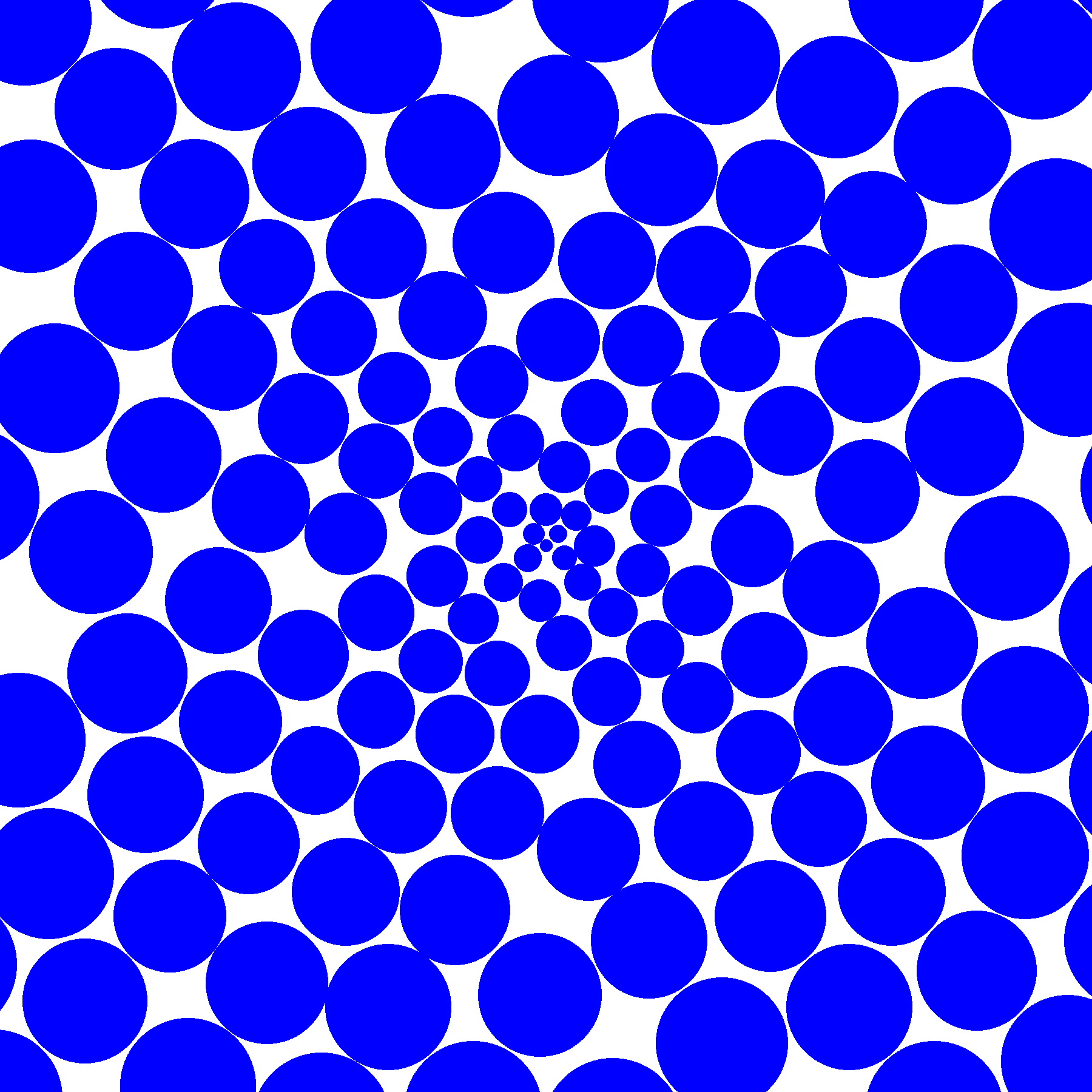This the second post in a recurring series, My Favorite Sequences. If you like this sort of thing, check out the Integer Sequence Review from The Aperiodical!
A289523: Packing Circles of Increasing Area
In July 2017, I added a mathematically-silly-but-visually-fun sequence, A289523. The sequence works like this: place a circle of area \(\pi\) centered at \((1,1)\), then place a circle of area \(2\pi\) centered at \((2,a(2))\) where \(a(2) = 4\), the least positive integer such that the circle does not overlap with the first circle. Next, place a circle of area \(3\pi\) centered at \((3,a(3))\) where \(a(3) = 7\) is the least positive integer such that the circle does not overlap with the first two circle. Continue this pattern ad infinitum, creating the earliest infinite sequence of positive integers such that no two circles overlap with any others, and a circle centered at \((k, a(k))\) has area \(k\pi\).
I haven’t done much mathematical analysis on this problem, but it would be interesting to see if it’s possible to compute (or put some bounds on) the packing density of the convex hull of the circles. Also, a glance at a plot of the points suggests that the sequence is bounded above by a linear function—is this the case?
The sequence begins 1, 4, 7, 1, 11, 16, 5, 21, 27, 34, 10, 1, 41, 17, 49, 25, 57, 6, 33, 66, 43, 14, ....
Finding an upper bound
The scatter plot of A289523 suggests that the centers of the circles have a linear upper bound. This is to be expected! The areas of the circles increase linearly, and the packing density is (presumably) nonzero.
What is the slope of the upper bound? And what is the packing density of these circles in the limit?

Related Construction
At the end of March, I posted a related puzzle, “Placing Circles Along a Square Spiral”, on Code Golf Stack Exchange. For the post, I made a few animated GIFs that explain the construction and tweeted about them.
I made some animated GIFs and posted about this on Code Golf Stack Exchange. https://t.co/VksT5lCe5K pic.twitter.com/mDzkwlxKbF
— Peter Kagey (@PeterKagey) March 28, 2021
Impressively, Code Golf Stack Exchange users tsh, Arnauld, and A username each wrote (deliberately terse) Javascript code that computes the placement of these circles.
In fact, they compute something strictly harder! In the challenge, after laying down all of these circles (in blue), the challenge instructed them to go back to the start and greedily fill the gaps with (red) circles of increasing area. Next, they laid down a third (yellow) generation in the same fashion, and fourth (cyan) generation, and so on.

Related questions
- What is the packing density of the first (blue) generation?
- What is the packing density of the \(k\)-th generation?
- How many “steps” away from the origin is the smallest circle in the \(k\)-th generation?
- Do an infinite number of blue circles touch? Do an infinite number of any circles touch? Which ones?
- How far can a circle be from its neighbors? Which circles are maximally far from their neighbors?
- How does this work if the path the circles follow is not the spiral? Can different paths have significantly different packing densities?
If you have thoughts or ideas about any of this—or if you just want to make animated GIFs together—leave a comment or let me know on Twitter, @PeterKagey!

Leave a Reply